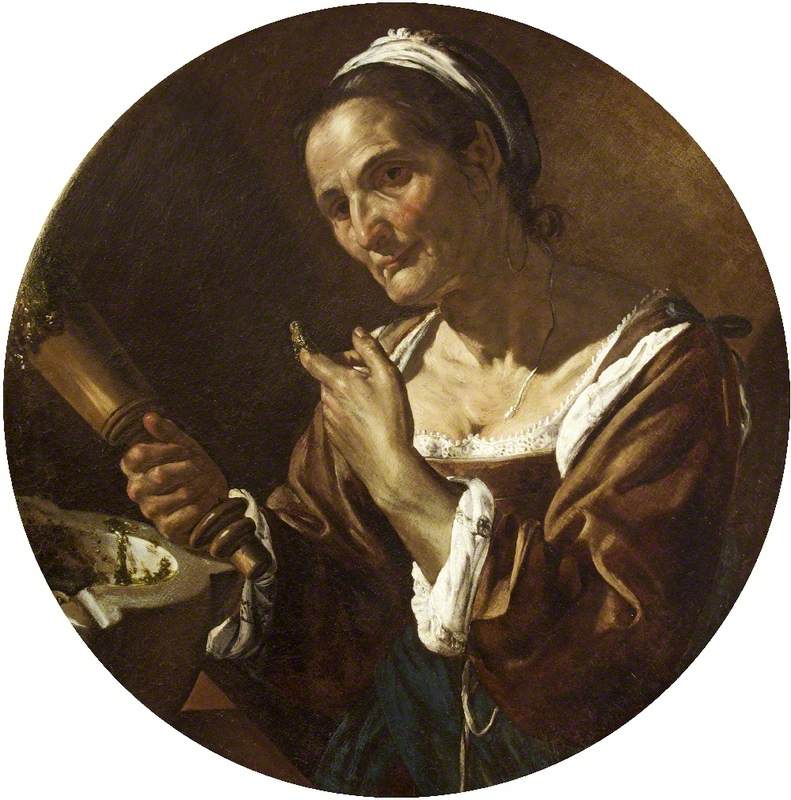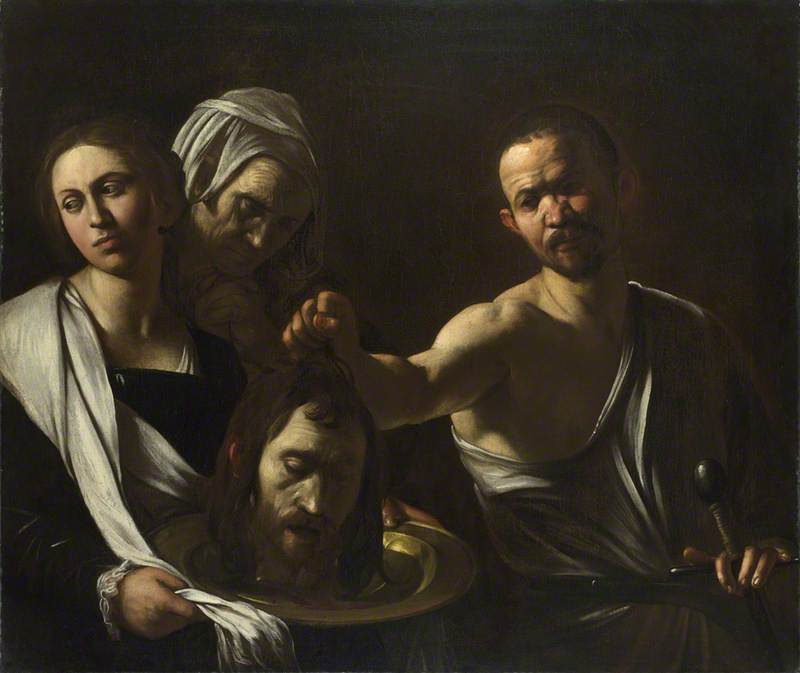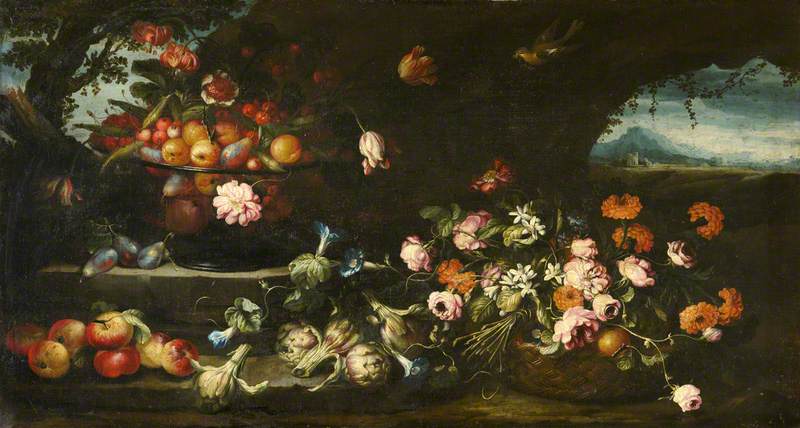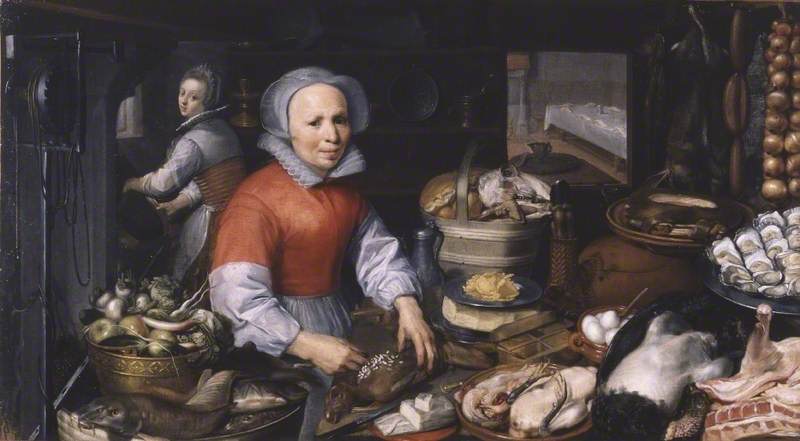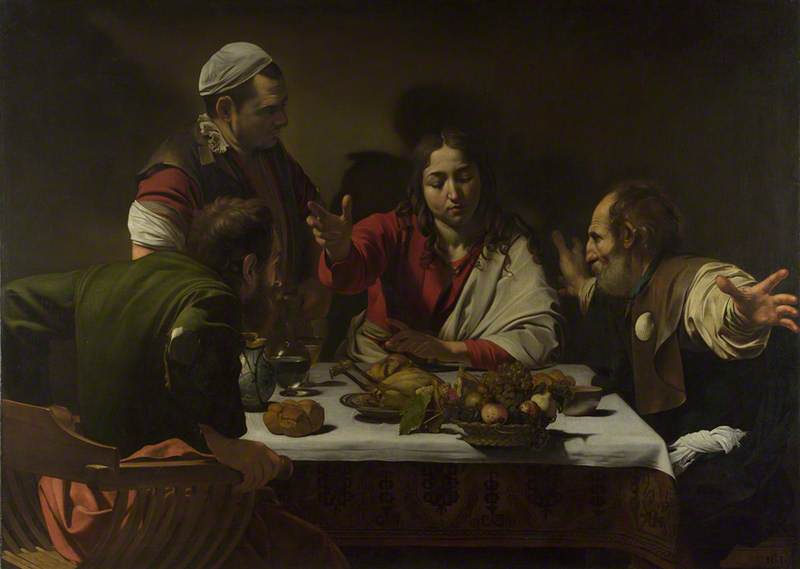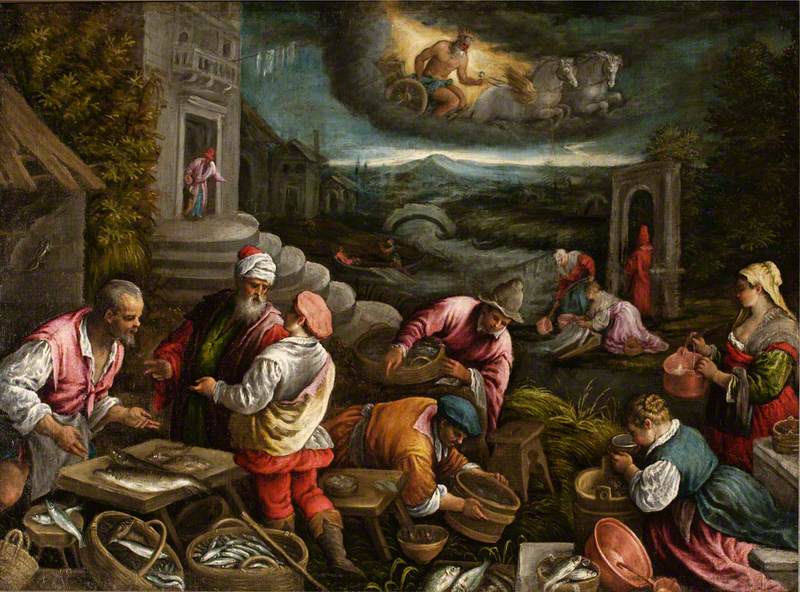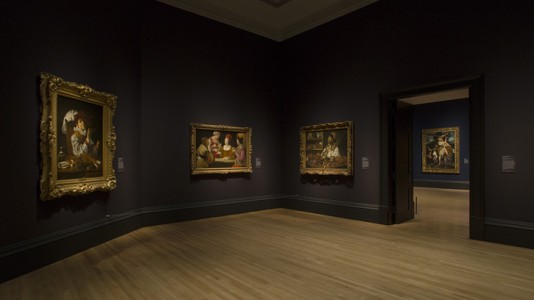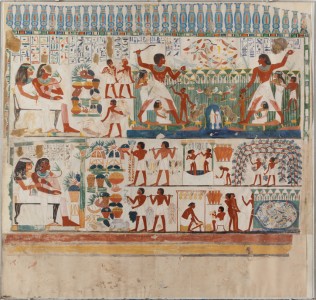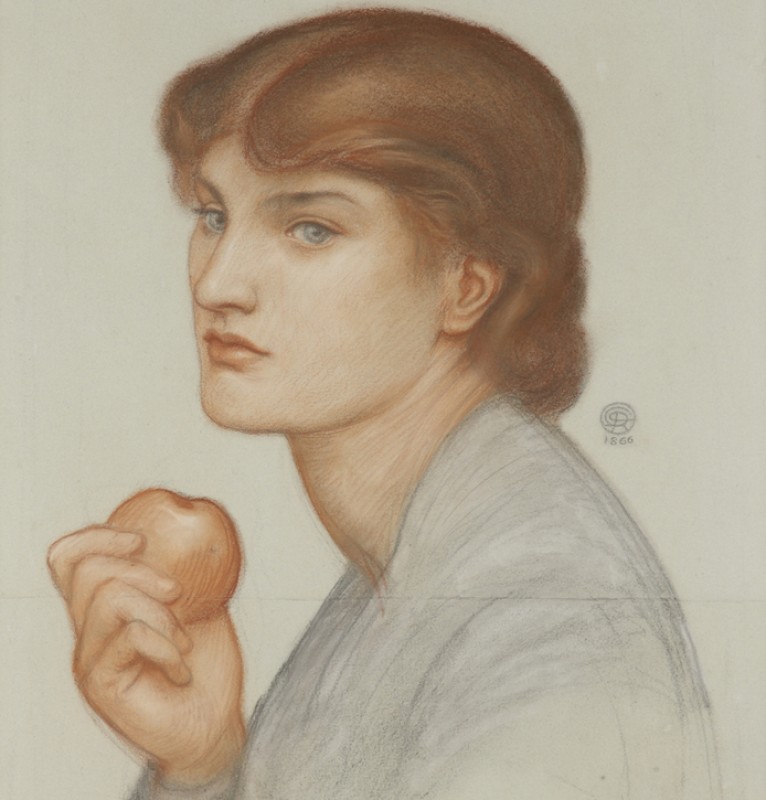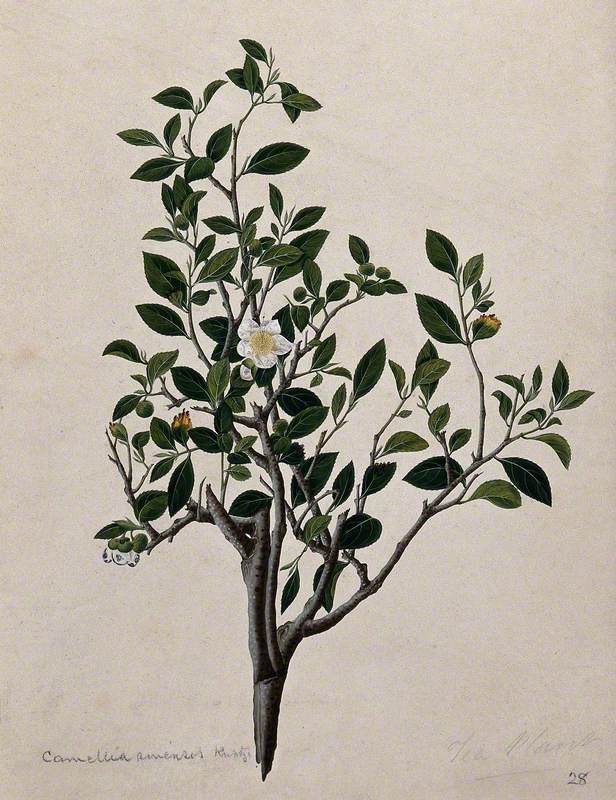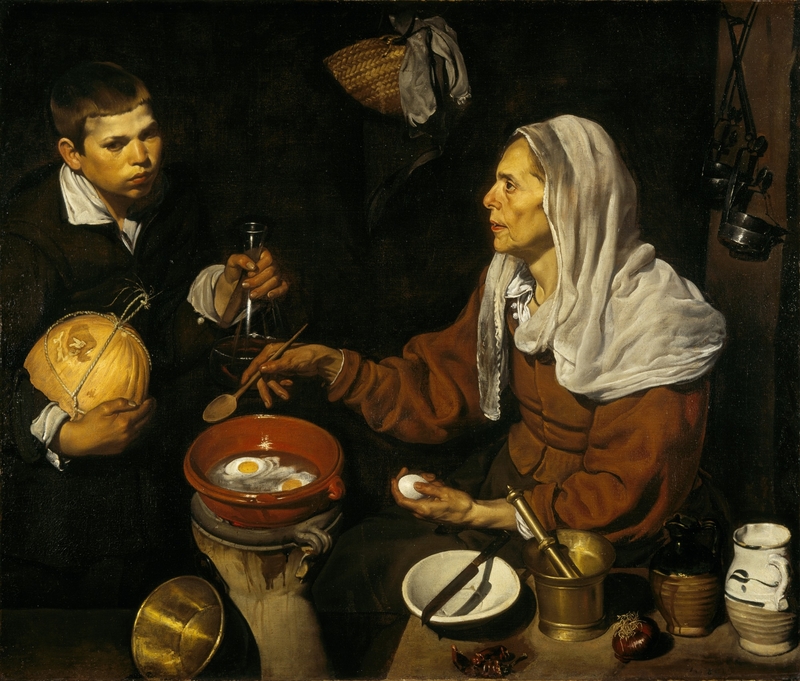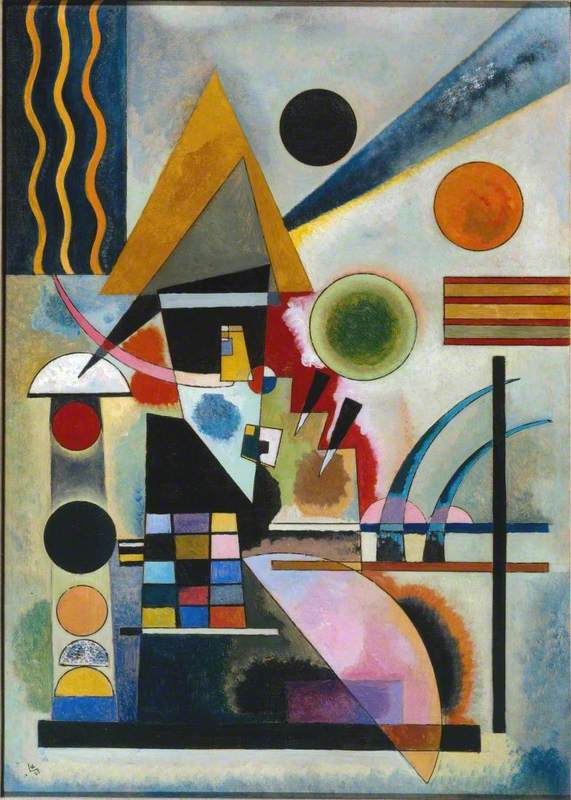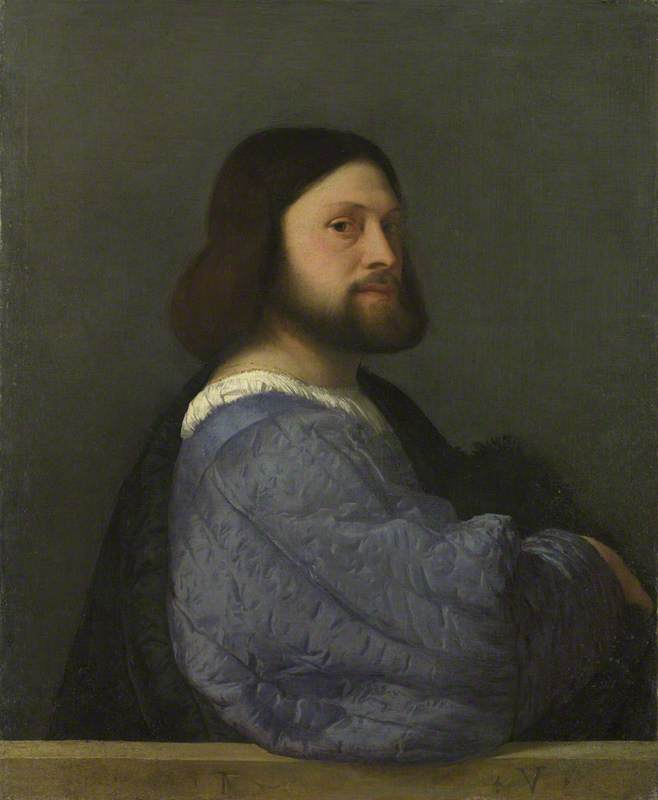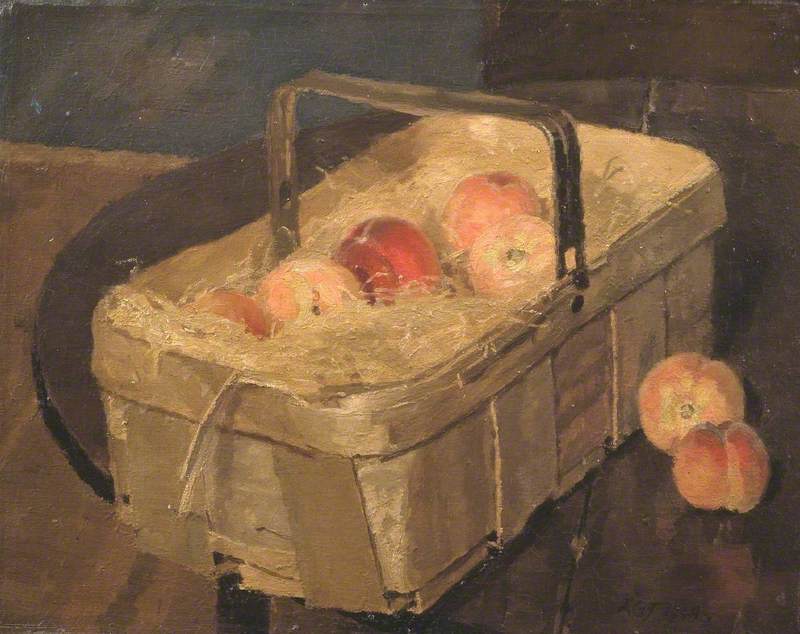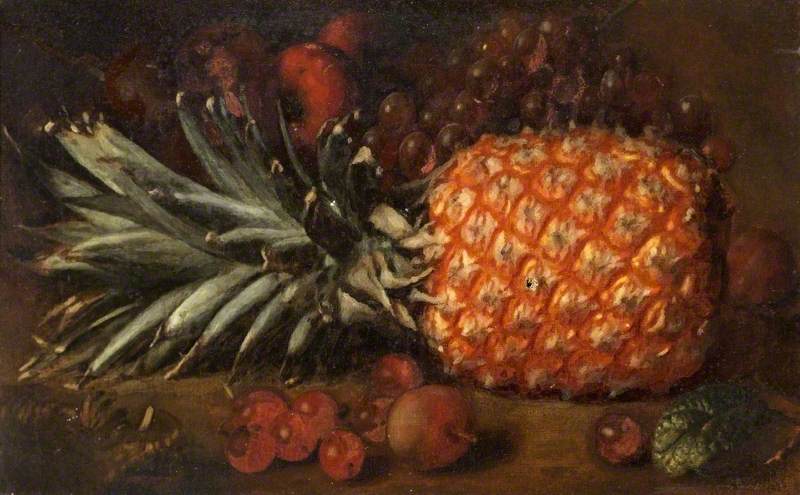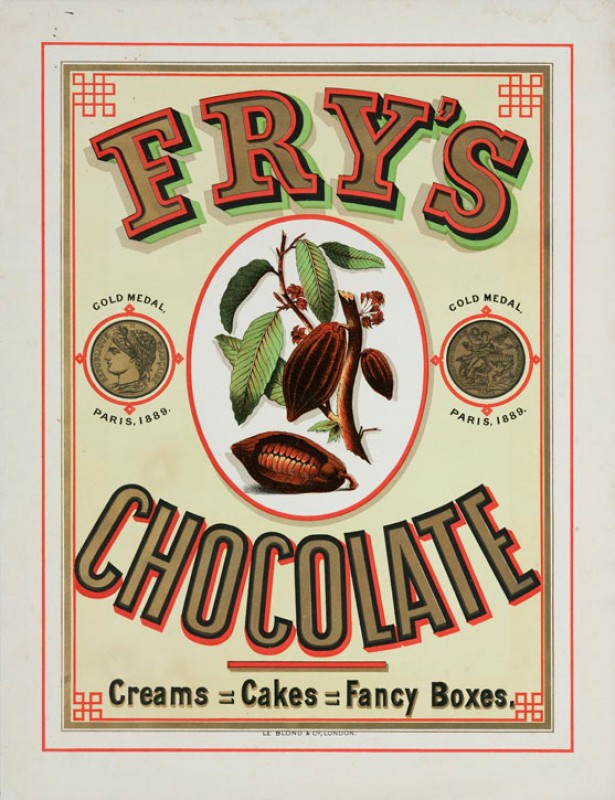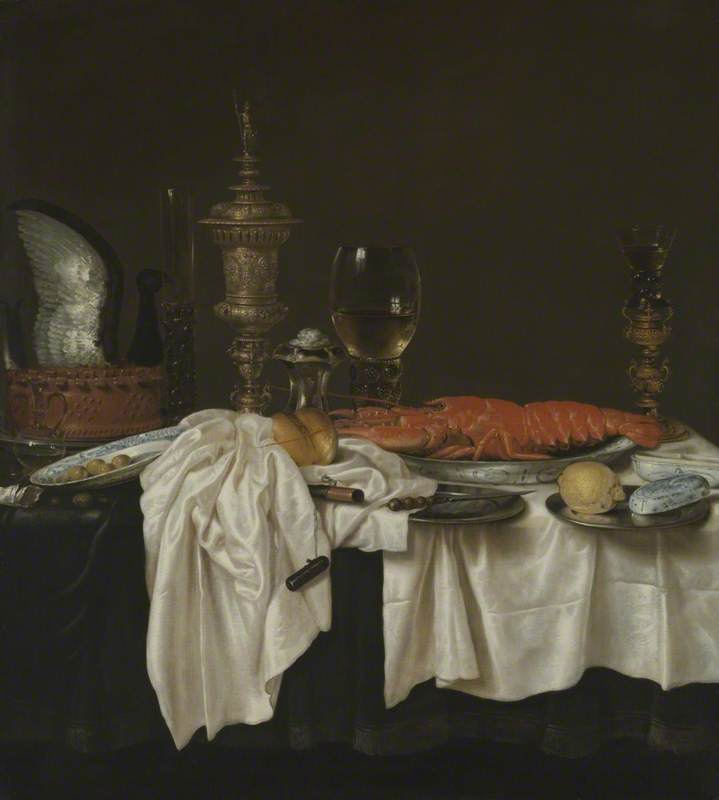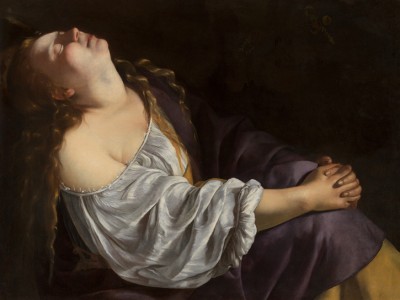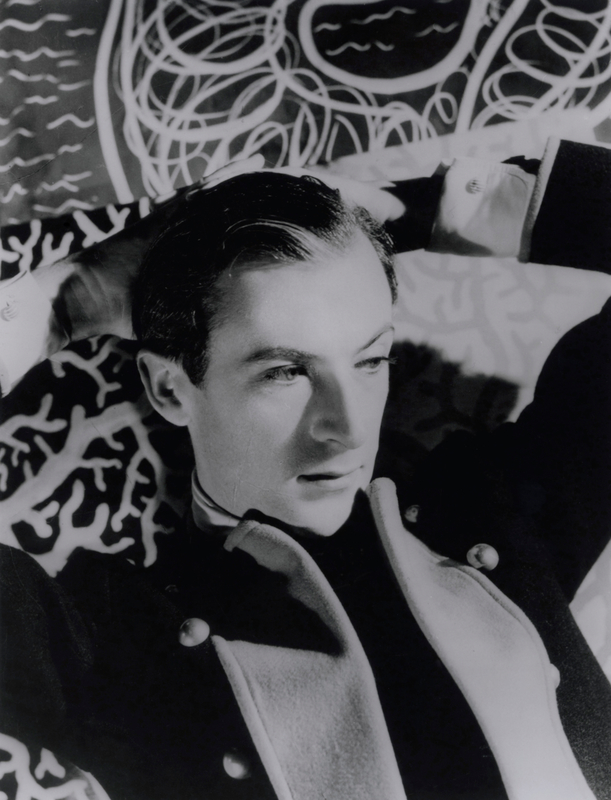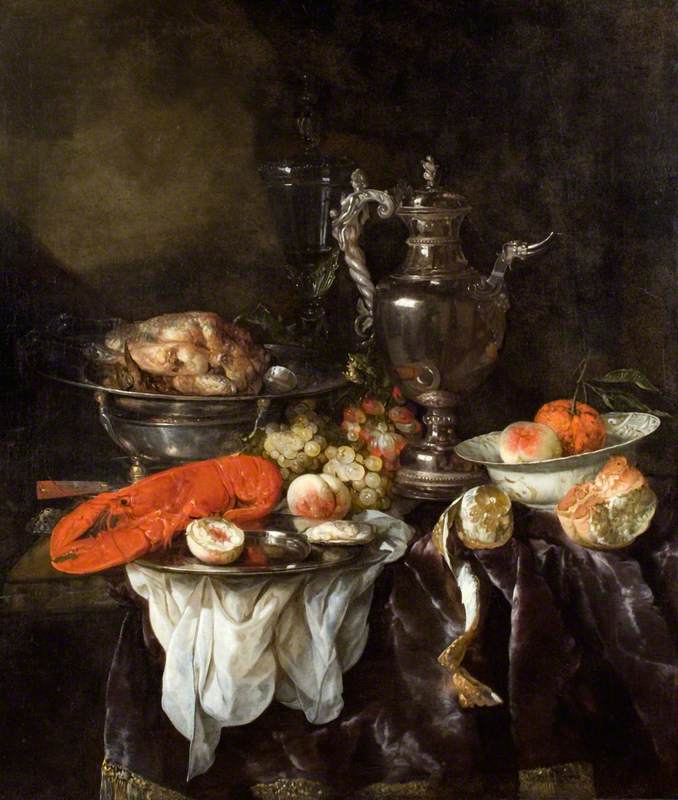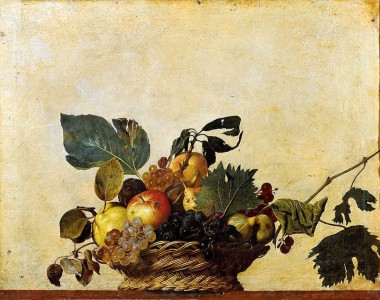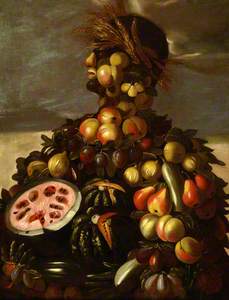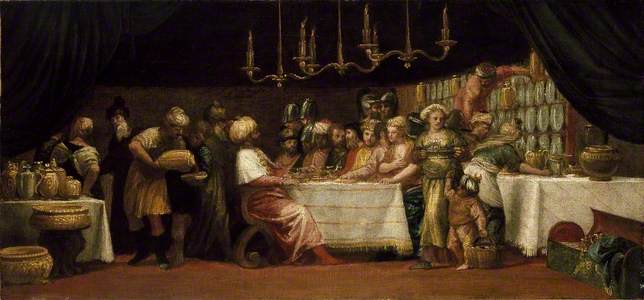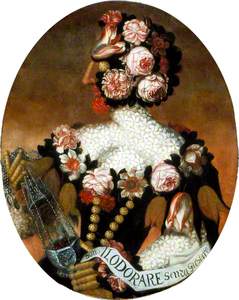There they sat on the dish, glistening with oil, or was it butter? Eight artichokes ordered by Caravaggio in the Osteria lo Moro on a hot sultry night in April 1604. They really ought to have been served separately; ‘How can I tell which is which?’ he grumbled. ‘Sniff them and see...’, sneered the insolent waiter. He got what was coming to him: ‘Se ben mi pare, becco fottuto, ti credi di servire qualche barone!’ ‘Looks to me, you f*cking cuckold, like you think you’re serving some mafioso!’ Caravaggio roared, flinging the dish at the wretch’s head and reaching for the nearest sword.
This is recorded in the verbatim evidence in the painter’s police record, along with much more evidence of GBH and eventually homicide. These violent episodes seemed to come from a need for the adrenalin of conflict. After weeks of solitary, patient, perfectionist work on a painting, Caravaggio would collect his fee, reach for his sword, and strut the streets of Rome searching for and creating mayhem. His right to carry a sword, as a member of the household of a Roman cardinal, was more badge of honour than for self-defence. When charged with possession of more offensive weapons, Caravaggio pointed out that the pair of compasses concealed under his cloak were measuring instruments, used to gauge the position of items in a still life painting.
Caravaggio’s depiction of the low life he seemed to enjoy, as much as the refined existence of his sophisticated patrons, inspired artists in other countries as well as Italy.
But it is possible that Michelangelo Merisi da Caravaggio never was the tragic hero of popular imagination: a misunderstood and unrecognised genius, starving in a garret, harshly treated by fate and victim of his own mercurial temperament. The smart lad who left Lombardy for Rome in 1592 was already a skilled painter; he was going where the money was, and did rather well for himself. During those early years working with different masters, toiling away in studio and workshop, getting on with the drudgery of copying the works of others, or finishing the boring bits of commissioned paintings, he learned how to exploit the scene.
When Caravaggio arrived, Rome was a tumultuous mix of ancient ruins, tranquil gardens and vineyards, imposing modern palaces and thoroughfares and sordid medieval backstreets. From 1585 to 1590 Pope Sixtus V was hell-bent on renewing the Catholic Church’s authority with a ruthless urban renovation of the city. If Martin Luther could hand the Bible over to the masses as a printed book in the vernacular, thus eliminating priests and popes and the whole corrupt ecclesiastical establishment, then the papacy would have to fight back. Sixtus created broad roads connecting the pilgrim churches, with beguiling vistas of obelisks and fountains, each with inscriptions emphasising his authority. The faithful were overwhelmed by the splendour of the churches and the intensity of feeling in the paintings of the saints celebrated within.
This immediate appeal to the emotions of the faithful was through striking images of everyday life, bringing the church to ordinary people, and this is what The Supper at Emmaus was all about. Travellers on the road, glad of the companionship and security, pause for a meal at an inn. We recognise them as ordinary people, and the food is also what one might expect. The shirt-sleeved waiter with his cap, and unusual napkin armband, is attentive to the correct service of the meal of pot-roast guinea fowl or chicken, salad and fruit. The principal guest breaks the bread in a flash-point of violent illumination: the travellers recognise, in the amiable beardless youth, the young Jesus of Nazareth they were captivated by so many years ago, now lifeless in his tomb.
It was commissioned in 1601 by one of Caravaggio’s friends and patrons in Rome, Ciriaco Mattei, brother of the Cardinal Girolamo Mattei – both active promoters of the Counter-Reformation. In this painting, Caravaggio forcefully places the Bible story in the banal everyday world, accessible to us all. Caravaggio’s skills, by then much admired, were deployed in many official commissions to make this point. But the painting is also of value to food historians, who plunder the arts for information about food, drink and dining in everyday life. The white tablecloth, spread over an oriental carpet, the basket of fruit, the fowl and the carafe of wine, are all elements of a still life, static and calm, like the waiter, in contrast to the emotional gestures of his guests, and the authority of the young Christ.
Interior with a young Man holding a Recorder
Cecco del Caravaggio (b.c.1589) 
This meal at an inn is perhaps the most informative of his works – the other religious themes tell us very little about food – but there are still life paintings by Caravaggio and his followers which tell us a lot about fruit and vegetables, including an early sighting of chilli pepper and tomatoes. Interior with a young Man… by Cecco de Caravaggio, pupil, colleague and probably lover of Caravaggio, shows fruit – apples, peaches, figs, grapes, a melon, and a collection of kitchen objects – all depicted with great skill: from the rough texture of the unglazed earthenware jug on the left, to the glass bowl of water with its reflections of light bouncing off the white shirt of the musician, and the distorted shapes of the fruit inside. The table is rammed against a recessed shelf with more kitchen things: a big rocky hunk of parmesan cheese, a solid-looking pie with a wedge cut out of it, a fresh cheese hanging on a length of string to keep it from mice. Every object is a natural inhabitant of a well-stocked larder and provides contrasting texture. With a much-needed carafe of the light vino dei castelli on his right, the disgruntled youth playing his recorder seems to resent all this domestic clutter.
In Boy bitten by a Lizard we can see again the preoccupation of Caravaggio and his patron, with the fiendishly difficult depiction of reflected light in the virtuoso rendering of the carafe of water with flowers: a static element in contrast to a moment of intense shock felt by the wounded boy.
Caravaggio’s still life paintings had already inspired a group of enthusiasts, including the mysterious artist now known as the Master of Hartford. It was in this ambience, especially in the household of Cardinal Del Monte, that the taste for realism in art coincided with the needs of the church. Naturalists, botanists and physicians collaborated with wealthy collectors to set up botanic gardens and cabinets of curiosities, and artists were in demand to record their contents. The need for precision in the observation of nature, and accuracy in recording this, was paramount. The classification systems for plants and animals that we take for granted did not yet exist, so artists and scientists were feeling their way towards something they knew they needed but could not comfortably define: an exciting time for painters and their patrons, when both science and religion were a big inspiration.
The artichoke anecdote is often repeated to Caravaggio’s disadvantage, but it helps put many things in perspective. Italians do not mess about with good food; it was not that the waiter insulted Caravaggio, it was his casual handling of the carefully prepared artichokes that caused the explosion of rage. Artichokes were both posh and plentiful in Rome, and were prepared with time-consuming skill, as they are today. Carciofi alla romana are trimmed of all the rough inedible bits and cooked slowly, stalk upwards, in olive oil and water, with garlic and mentuccia (a variety of mint, not pennyroyal, as we sometimes guess, but calamitha nepeta), until soft enough to eat with a spoon. You can buy them readily prepared in Roman markets, along with the gift of a few sprigs of the herb. Banquets served to popes and cardinals by the great cook Bartolomeo Scappi included artichokes prepared in various ways, raw in early spring, al pinzimono, with salt and oil, or trimmed down to the tender base of the leaves or ‘bottoms’, cooked until tender, and served with salt and bitter orange juice. And there they were, plentiful in the markets of Rome, and on the menus of taverns and ordinary eating places, with the added benefit of gloriously baroque foliage, curling and twisting: a painter’s delight.
Artichokes figure in the many still life paintings associated with Caravaggio and his circle in Rome. Up north in Lombardy, where he learned his trade, artichokes were still something of a luxury, and appear as such, alongside asparagus, in many genre scenes and still lifes, where they sit apart from mundane vegetables like cabbages and carrots. Caravaggio would have known Vincenzo Campi’s Fruit Seller, with the artichokes and asparagus conspicuous in the bottom left-hand corner, a cabbage and broad beans on the right. Campi’s clients were enthusiastic about the still lifes of the Low Countries and Germany, full of things to eat, and the genre scenes, where fruit and veg, fish and meat, were bought and sold, cooked and consumed.
In Milan, he would have seen the amazing portrait heads by Arcimboldo, where fruit, flowers and vegetables were read as human features – with an artichoke flourishing in the buttonhole of Summer. This still life by Blas de Ledesma presents artichokes and asparagus as special luxuries.
Still Life with Asparagus, Artichokes, Lemons and Cherries
Blas de Ledesma (c.1580–c.1640) 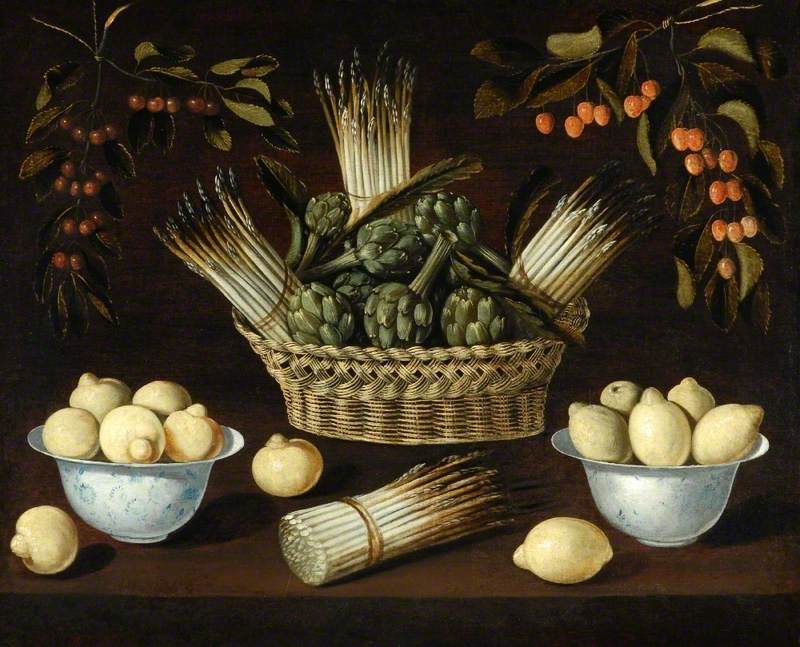
Caravaggio must have known the work of the Bassano family up near Treviso, in Bassano del Grappa (the town is named after the mountain, Monte Grappa, and the distilled drink after the town). Their magical realism works were comfortable vehicles for biblical or classical themes, and their reassuring details of daily life pleased their clients and aid our knowledge of food and eating at that time. Often the foreground of a painting shows food in preparation or lined up on the credenza or a table, with a familiar cast of servants, kitchen boys, and the weary master cook himself, slumped in a chair at the end of a long hard day. The table in The Feast of Anthony and Cleopatra shows how the impossible number of dishes in one of Scappi’s feasts were served, overlapping each other like a Chinese banquet, from which guests could pick and choose.
In Venice, Caravaggio might have wondered at the magnificent banquet scenes by Veronese, commissioned by religious orders, in which a bible story was enacted amidst the flurry and bustle of a modern aristocratic feast. The food was barely visible (to our frustration), but the rituals of fine dining, and the complexities of serving and eating are there. In Venice, the theme of getting the Christian message across to a disgruntled congregation was achieved by showing identifiable nobles, and in one case musicians in their finery, along with entertainers, in settings of Palladian splendour. In Rome, as we have seen, it was more down to earth and more intense, and it was there that Caravaggio found success and notoriety.
Alongside the impulse from the Counter-Reformation, paintings of everyday life were being appreciated in a climate of curiosity about the natural world, and an impulse to describe and codify it. Caravaggio’s depiction of the low life he seemed to enjoy, as much as the refined existence of his sophisticated patrons, inspired artists in other countries as well as Italy.
Gillian Riley, food historian
